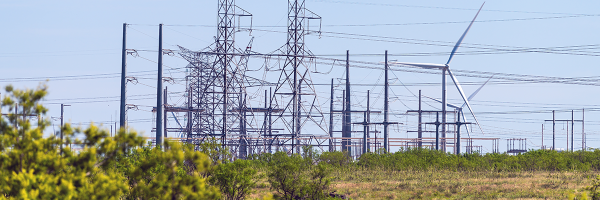In Texas, the first astronomical day of winter lands on December 21, but when does it start to get cold in the Lone Star State? And how cold does it get? Whether you’re considering a move here, planning for winter fun like holiday festivals and markets, or wanting to make sure that you weather the season in comfort and safety, we’re here to help.
Winter technically lasts from mid-December until mid-March, but we typically see our coldest days in January, with lows of around 30° Fahrenheit. There are, however, outlying events that can strike, like Winter Storm Uri in February of 2021, which brought sub-zero temperatures and ice storms, causing major power outages across the state and tragically claiming the lives of hundreds of people. It even brought more snow accumulation than usual to the southern and central parts of the state, which typically only see occasional flurries. Snow in Texas might be unexpected, but it does happen.
Cold Varies by Region
Since Texas covers such a huge area, winter temps range widely from one location to another, varying by an average of 20 degrees between the most northern and southern points of the state. Up in the northern districts and Panhandle, colder weather arrives in November and snow is more likely. In south and central Texas, winter arrives around the astronomical date of December 21.
In southern cities like Corpus Christi or Houston and the area surrounding, freezing nights are a rarity, and daytime highs are typically in the low 60s. However, it’s worth noting that El Niño weather patterns can mean that these months bring more rain.
Austin, San Antonio, and other central Texas towns have winters that tend to be drier and milder, with average daytime temperatures reaching the 70s. Snow is rare here, except for in outlying weather events.
Out in West Texas, around El Paso and Midland, winters also tend to be mild and, like the rest of the year, very dry and windy. Daytime in January and February average around 60 degrees.
Northern Texas cities of Amarillo, Dallas, Lubbock and the neighboring region experience nights that are definitely chilly. Freezing and snow aren’t uncommon, and daytime temperatures can average in the 40s.
How Is Climate Change Affecting Temperatures?
The devastation caused by Winter Storm Uri, with its sub-freezing temperatures and heavy snowfall, was so dramatic and rare that it caused many people to wonder about the impact of climate change on our weather patterns. While it may be hard to draw a direct connection, scientists believe that the world’s warming climate contributed to the storm.
According to The Texas Tribune (December 14, 2021), multiple factors contributed to the frequency and severity of the storm, and could play a part in future cold weather. One of the major considerations was the breakdown of the stratospheric polar vortex, a swirling mass of cold air that forms in the autumn and circles above the arctic, trapping colder air. In January of 2021, the polar vortex weakened and divided, reportedly due in part to climate change, so the jet stream swung toward the south, bringing the cold air with it. When it hit moist air from the Gulf stream, that resulted in heavy ice and snow. This is not expected to happen every year, but from all appearances, it’s increasingly possible.
How Can You Get Ready for Winter?
There are several steps you can take to prepare for the colder months as well as unexpected storms. First is to weatherproof your home to help keep energy bills down, starting with checking your insulation to ensure that the structure is maintaining heat and energy as effectively and efficiently as possible.
Next, frost-proof outdoor faucets by wrapping them with insulation or fitting them with insulated covers, and use silicone caulk or weather stripping on windows and doors. If you turn to your fireplace for emergency heating, then double-check that your chimney is clean to avoid smoking up the inside of your house. Outdoors, look for branches that might break and fall onto your house if heavy ice occurs, and trim them back. If you have solar panels, there are a couple of extra steps worth taking, like changing the angle of their positioning to face the sun and making certain that their batteries are insulated.
It’s also a good idea to have an emergency kit ready with plenty of water and shelf-stable food in case there is a power outage. Likewise, make a communication plan with your loved ones on how best to stay in touch if the electricity goes out.
One other thing to consider is installing a programmable thermostat, if you don’t already have one. During the colder months, it will automatically adjust the temperature in your home so it stays cozy without using unnecessary energy, and if you go on vacation then you can program it to a lower temperature while you’re away.
More Tips for Reducing Energy Use
We also have some helpful tips to reduce your energy consumption when there’s a chill in the air. Close your curtains when the sun is down and invest in rugs to trap warm air, if you have hardwood floors. Also, if you heat your home overnight – turning up the temperature a bit in the evening and down in the morning – you will avoid drawing energy during the morning hours (6:00 to 8:59 am), when the demand for energy is highest. The same goes for using major appliances like laundry machines and dishwashers; running them at night will save you money.
If you haven’t already switched to LED lightbulbs and holiday lights for their benefit to the environment, now is a good time to consider doing so. They are much more energy efficient than incandescent bulbs, and last longer too. And if you have an electric vehicle, charge it during the overnight off-peak hours.

A Good Energy Plan Saves You Money
Many people don’t realize that colder weather can lead to a spike in energy bills for houses with electric heating, because of the extra resources required to keep homes warm across the state. At Rhythm Energy, we provide helpful reports on weekly usage, a great electricity offer, as well as bill predictions so you always know where you stand. We also offer transparent pricing and tailored energy solutions to help you plan for the winter months.
For added peace of mind, consider signing up for one of Rhythm’s protection plans, which cover HVAC, plumbing, and surge protection, and more. More information on these plans can be found at this link.
We’re committed to providing products, services and experiences that consistently delight you and make you feel more in control of your energy consumption, including 100% renewable energy plans to power your life.



